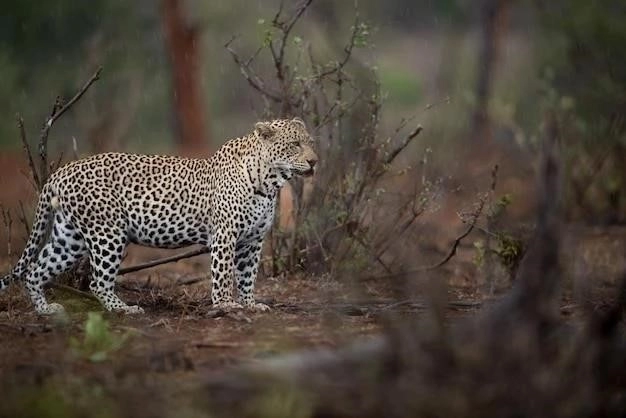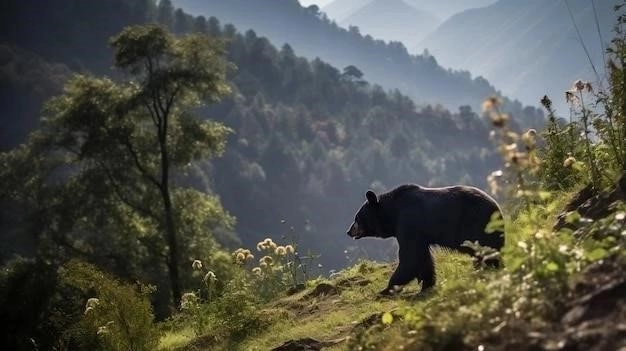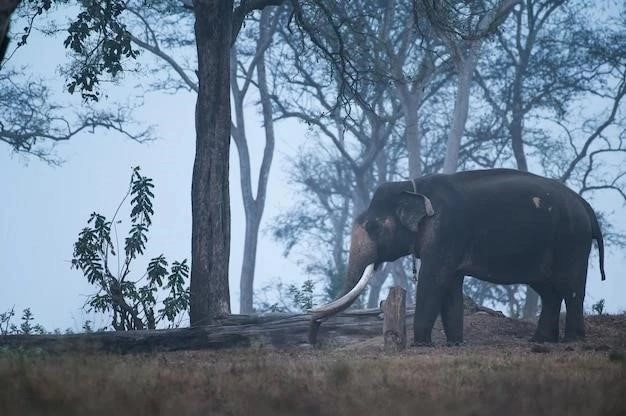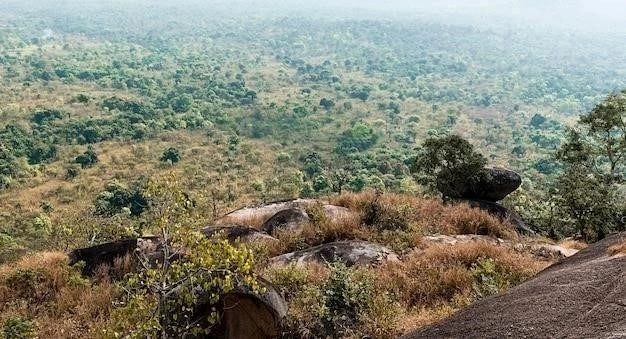Nestled amidst the urban sprawl of Mumbai, Sanjay Gandhi National Park, fondly known as Borivali National Park, stands as a testament to natures resilience. Spanning over 104 square kilometers, this protected area is a green oasis offering respite from the citys relentless pace.
A Rich History and Evolving Identity
The parks history is as layered as the lush landscape it protects. Initially established in 1942 under the Bombay National Park Act, it was then known as Krishnagiri National Park. Over the years, it underwent expansions and name changes, finally being christened as Sanjay Gandhi National Park in 1981, in memory of the late Prime Ministers son, Sanjay Gandhi.
A Haven for Biodiversity
Despite its urban setting, the park boasts an impressive array of flora and fauna. It is home to:
- Over 274 bird species٫ making it a birdwatchers paradise
- 35 mammal species, including leopards, deer, and monkeys
- A rich reptilian and insect population, with over 65 reptile species and 5000 insect species documented
- Over 1300 plant species, showcasing the diversity of Maharashtras ecosystem
Exploring the Parks Treasures
The park offers a plethora of activities for nature enthusiasts and casual visitors alike:
1. Kanheri Caves: A Journey Through Time
The Kanheri Caves, a complex of over 100 Buddhist cave temples carved into the basalt rock, stand as a testament to the regions rich historical past. Dating back to the 1st century BCE, these caves offer a glimpse into ancient Buddhist practices and traditions. Visitors can explore the intricate carvings, stupas, and prayer halls, marveling at the architectural prowess of a bygone era.
2. Trekking Trails: Embracing the Wilderness
For those seeking an immersive experience, the park offers seven designated trekking trails, each with its own unique charm. From leisurely walks amidst verdant greenery to challenging climbs offering panoramic views of the city, theres a trail for every fitness level. However, its essential to note that most trails require accompaniment by a naturalist or guide, ensuring both safety and a deeper understanding of the surroundings.
3; Wildlife Safari: Encounters with the Wild
While sightings of larger mammals like leopards are rare, the parks safari offers a chance to encounter some of its more elusive residents. The safari takes visitors through designated zones, providing glimpses of barking deer, spotted deer, and a variety of birdlife.
4. Boating and Other Activities
The park is also home to two lakes, Vihar and Tulsi, where visitors can enjoy a leisurely boat ride. Other activities include visiting the butterfly garden, exploring the nature information center, and simply enjoying a picnic amidst the tranquil surroundings.
Planning Your Visit
Getting There and Around
- By Air: The nearest airport is Chhatrapati Shivaji Maharaj International Airport, approximately 15 kilometers from the park.
- By Train: The closest railway station is Borivali Station on the Western Line, well connected to various parts of Mumbai. From the station, taxis and auto-rickshaws are readily available to reach the park.
- By Road: The park is easily accessible by road and is well connected by public transport. Private vehicles are permitted inside the park for a fee.
- Inside the Park: A shuttle bus service operates within the park, connecting major attractions like the Kanheri Caves. Visitors can also choose to walk or hire bicycles available for rent.
Best Time to Visit
The park is open throughout the year, but the best time to visit is during the winter months (October to March) when the weather is pleasant and ideal for outdoor activities. Avoid visiting during the monsoon season (June to September) as heavy rains can make some trails inaccessible.
Accommodation
While the park itself offers limited accommodation options like camping and a few guesthouses, a range of hotels and homestays are available in the vicinity, catering to different budgets and preferences.

Conservation Efforts
The park faces numerous challenges, including habitat fragmentation, human-wildlife conflict, and the pressures of a burgeoning urban population; However, dedicated conservation efforts are underway to mitigate these challenges and preserve this valuable ecosystem. The park authorities, along with various NGOs and research institutions, are actively involved in wildlife monitoring, habitat restoration, and raising awareness among local communities about the importance of conservation.
A Legacy of Tranquility
Sanjay Gandhi National Park stands as a testament to the delicate balance between nature and urban development. It serves as a reminder that even amidst the concrete jungle, pockets of tranquility can thrive, offering solace and connection to the natural world. A visit to this unique park is not just a recreational activity; its an opportunity to appreciate the importance of conservation and the interconnectedness of all living beings.
A Closer Look at the Parks Diverse Ecosystems
Beyond its popular attractions, Sanjay Gandhi National Park harbors a surprising diversity of ecosystems within its relatively compact area. These micro-habitats, shaped by variations in terrain, soil type, and water availability, contribute to the parks rich biodiversity.
1. Tropical Deciduous Forests:
Dominating much of the parks landscape, these forests are characterized by trees that shed their leaves during the dry season, creating a vibrant carpet of fallen foliage. Teak, bamboo, and various species of acacia thrive here, providing shelter and sustenance to a variety of animal life.
2. Moist Deciduous Forests:
Found in areas with higher moisture content, typically along streams and valleys, these forests retain a greener canopy throughout the year. They are characterized by species like Jamun (Indian blackberry) and Mango, offering a different habitat niche for various flora and fauna.
3. Grasslands:
Interspersed within the forested areas, grasslands provide essential grazing grounds for herbivores like deer and antelope. These open areas also support a unique ecosystem of birds, reptiles, and insect life.
4. Rocky Outcrops and Caves:
The parks distinctive basalt rock formations, remnants of ancient volcanic activity, create a unique micro-habitat. The rocky outcrops provide shelter for reptiles and small mammals, while the caves serve as roosting sites for bats and nesting grounds for certain bird species.
The Significance of Urban Green Spaces
The presence of Sanjay Gandhi National Park within a megacity like Mumbai underscores the critical role urban green spaces play in maintaining ecological balance and enhancing human well-being.
1. Environmental Benefits:
- Air Purification: The park acts as a giant lung, absorbing carbon dioxide and releasing oxygen, thereby mitigating the impacts of air pollution in the city.
- Temperature Regulation: The dense vegetation helps moderate temperatures, reducing the urban heat island effect.
- Water Management: The parks forested areas act as natural sponges, absorbing rainfall and replenishing groundwater reserves.
2. Social and Health Benefits:
- Recreation and Well-being: The park provides much-needed green spaces for recreation, relaxation, and escaping the stresses of urban life. Studies have shown that spending time in nature has positive effects on mental and physical health.
- Education and Awareness: The park serves as a living laboratory for environmental education, fostering appreciation for nature and promoting conservation awareness among urban populations;
- Community Building: The park provides a shared space for social interaction and community events, fostering a sense of belonging and ownership among residents.
Conservation Challenges and the Way Forward
Despite its protected status, Sanjay Gandhi National Park faces ongoing challenges. Encroachment, habitat fragmentation due to infrastructure projects, and human-wildlife conflict pose serious threats to the parks long-term ecological integrity. Addressing these challenges requires a multi-pronged approach:
- Strengthening Enforcement: Stricter enforcement of park regulations is crucial to prevent illegal activities like encroachment and poaching.
- Mitigating Human-Wildlife Conflict: Implementing measures to reduce human-wildlife conflict, such as wildlife corridors and community outreach programs, is essential.
- Promoting Sustainable Tourism: Encouraging responsible tourism practices that minimize environmental impact and contribute to local communities is key.
- Investing in Research and Monitoring: Continued research and monitoring of the parks biodiversity and ecological processes are crucial for informed conservation planning.
- Fostering Community Engagement: Engaging local communities in conservation efforts and empowering them as stakeholders is vital for long-term success.
Sanjay Gandhi National Park serves as a powerful reminder that the coexistence of nature and urban environments is not only possible but essential. By prioritizing conservation efforts, promoting responsible use, and fostering a deeper understanding of the parks ecological and social significance, we can ensure that this green oasis continues to thrive for generations to come.
The Future of Sanjay Gandhi National Park: A Delicate Balance
Preserving Sanjay Gandhi National Park for future generations requires a proactive and multifaceted approach, addressing both immediate challenges and long-term sustainability.

1. Strengthening Park Management and Law Enforcement
- Increased Patrols and Surveillance: Deploying additional park rangers equipped with modern technology (drones, camera traps) to deter encroachment, poaching, and illegal resource extraction.
- Community-Based Conservation Programs: Engaging local communities living near the parks periphery in conservation efforts. This includes providing alternative livelihood opportunities, promoting sustainable resource use, and fostering a sense of shared responsibility for the parks well-being.
- Stricter Legal Action: Enforcing stricter penalties for violations of park regulations, sending a strong message that environmental crimes will not be tolerated.

2. Mitigating Human-Wildlife Conflict
- Wildlife Corridors: Establishing and maintaining functional wildlife corridors to connect fragmented habitats and allow animals safe passage across urban landscapes.
- Community Awareness and Education: Implementing targeted outreach programs to educate communities about wildlife behavior, safety measures to prevent encounters, and methods for coexisting with wildlife.
- Compensation Schemes: Developing fair and efficient compensation schemes for farmers and communities who experience losses due to wildlife interactions, reducing resentment and promoting tolerance.
3. Promoting Responsible Tourism and Recreation
- Visitor Management Strategies: Implementing visitor quotas, designated trails, and timed entry systems to minimize the ecological footprint of tourism and recreation within the park.
- Sustainable Tourism Practices: Encouraging eco-friendly tourism operators and promoting responsible visitor behavior through educational campaigns and interpretive signage.
- Revenue Sharing Mechanisms: Ensuring that tourism revenue generated within the park is reinvested in conservation efforts and benefits local communities, fostering a sense of ownership and support for conservation.
4. Investing in Research and Monitoring
- Long-term Ecological Monitoring: Establishing comprehensive long-term monitoring programs to track key ecological indicators, such as wildlife populations, habitat health, and the impacts of climate change. Data-driven decision-making is crucial for adaptive management strategies.
- Applied Research: Supporting research projects focused on finding practical solutions to specific conservation challenges faced by the park, such as managing invasive species or mitigating human-wildlife conflict.
- Collaboration and Knowledge Sharing: Fostering collaboration between park authorities, research institutions, and conservation organizations to leverage expertise and maximize the impact of conservation initiatives.
5. Harnessing the Power of Technology
- Remote Sensing and GIS: Utilizing remote sensing technologies, like satellite imagery and aerial surveys, combined with Geographic Information Systems (GIS), to monitor deforestation, track wildlife movement patterns, and identify areas vulnerable to encroachment.
- Citizen Science Initiatives: Engaging the public in data collection through citizen science programs, empowering individuals to contribute to conservation efforts while enhancing awareness and appreciation for the parks biodiversity.
- Digital Outreach and Education: Leveraging online platforms and social media to reach wider audiences with educational content, promoting conservation awareness, and garnering support for the parks protection.

Conclusion: A Shared Vision for a Sustainable Future
The preservation of Sanjay Gandhi National Park is not solely the responsibility of park authorities but a collective endeavor requiring active participation from government agencies, local communities, NGOs, researchers, and the general public. By embracing a shared vision for a sustainable future, and working collaboratively to address the challenges and capitalize on opportunities, we can ensure that this vital green lung continues to thrive, enriching the lives of both present and future generations.
6. Addressing Climate Change Impacts
Climate change poses a significant threat to the delicate ecosystems of Sanjay Gandhi National Park. Rising temperatures, altered rainfall patterns, and increased frequency of extreme weather events can disrupt plant and animal communities, exacerbate habitat loss, and heighten the risk of wildfires. Implementing proactive adaptation strategies is crucial for building resilience:
- Vulnerability Assessments: Conducting comprehensive vulnerability assessments to identify species and habitats most susceptible to climate change impacts. This will guide targeted conservation efforts and resource allocation.
- Habitat Restoration and Enhancement: Restoring degraded habitats and enhancing connectivity between fragmented ecosystems to improve species ability to adapt to shifting climatic conditions. This includes promoting native plant species and creating microclimates that offer refuge from extreme heat.
- Water Resource Management: Implementing sustainable water management practices within the park and surrounding areas to ensure adequate water availability for wildlife, especially during periods of drought. This may involve rainwater harvesting, restoring wetlands, and promoting water-efficient landscaping.
7. Strengthening Legal and Policy Frameworks
Robust legal and policy frameworks are essential for providing a strong foundation for long-term conservation. This includes:
- Reviewing and Updating Existing Laws: Assessing the effectiveness of existing environmental laws and regulations pertaining to the park and its surrounding areas. Amending or enacting new legislation to address emerging challenges, such as climate change, wildlife crime, and encroachment.
- Integrated Land Use Planning: Promoting integrated land use planning that considers the ecological importance of the park and its buffer zones. This includes restricting development in ecologically sensitive areas and establishing green corridors to maintain connectivity.
- Strengthening Enforcement Capacity: Providing adequate funding and resources to law enforcement agencies responsible for protecting the park. This includes training park rangers, equipping them with modern technology, and enhancing their capacity to investigate and prosecute environmental crimes.
8. Fostering Public-Private Partnerships
Conservation efforts require significant financial resources and expertise. Public-private partnerships can play a vital role in bridging funding gaps, leveraging technical expertise, and promoting innovation:
- Engaging Corporate Social Responsibility: Encouraging corporations to invest in conservation initiatives within the park through their corporate social responsibility (CSR) programs. This can include funding for research, infrastructure development, or community outreach projects.
- Collaborating with NGOs and Research Institutions: Partnering with NGOs and research institutions with expertise in conservation biology, wildlife management, and community engagement. This can enhance the effectiveness of conservation programs and facilitate knowledge sharing.
- Promoting Eco-tourism Ventures: Supporting the development of sustainable eco-tourism ventures that generate revenue for conservation while providing economic opportunities for local communities. This can include guided nature walks, birdwatching tours, and educational programs.
9. Long-Term Vision and Adaptive Management
Conservation is an ongoing process that requires long-term vision, adaptive management, and a willingness to adjust strategies based on new information and changing circumstances:
- Developing a Shared Vision: Facilitating a participatory process that brings together all stakeholders to develop a shared vision for the future of Sanjay Gandhi National Park. This shared vision should guide long-term planning and decision-making.
- Adaptive Management Framework: Implementing an adaptive management framework that allows for flexibility and adjustments to conservation strategies based on monitoring data, scientific research, and feedback from stakeholders. This iterative approach ensures that conservation efforts remain effective and responsive to changing conditions;
- Celebrating Successes and Learning from Challenges: Regularly evaluating the effectiveness of conservation programs, celebrating successes, and learning from challenges. This transparency and accountability foster continuous improvement and build trust among stakeholders.
By embracing these comprehensive and integrated approaches, we can help ensure that Sanjay Gandhi National Park continues to thrive as a vital green lung for Mumbai, a refuge for biodiversity, and an inspiration for future generations.
Continuing the Legacy: Securing the Future of Sanjay Gandhi National Park
Preserving the ecological integrity of Sanjay Gandhi National Park (SGNP) amidst the burgeoning metropolis of Mumbai demands a multifaceted approach that extends beyond traditional conservation strategies. The parks proximity to a densely populated urban center necessitates a nuanced understanding of the complex interplay between human activities and ecological processes. This requires proactive engagement with diverse stakeholders, innovative management practices, and a long-term vision that prioritizes both ecological sustainability and human well-being.
10. Embracing Technology for Conservation
Technological advancements offer unprecedented opportunities to enhance conservation efforts. By integrating cutting-edge tools and techniques, SGNP can strengthen its monitoring, research, and management capabilities:
- Remote Sensing and GIS: Utilizing satellite imagery, aerial drones, and Geographic Information Systems (GIS) to monitor deforestation, track wildlife movement patterns, and identify areas vulnerable to encroachment. This data-driven approach enables proactive decision-making and targeted interventions.
- Wildlife Monitoring Technologies: Deploying camera traps, acoustic sensors, and GPS collars to monitor wildlife populations, study animal behavior, and mitigate human-wildlife conflict. Real-time data collection allows for adaptive management strategies and rapid response to emerging threats.
- Citizen Science Initiatives: Leveraging the power of citizen science by engaging the public in data collection, monitoring, and conservation activities. Mobile applications and online platforms can be used to report wildlife sightings, track invasive species, and contribute to park research.
11. Strengthening Community Engagement and Collaboration
The long-term success of SGNPs conservation efforts hinges on fostering strong partnerships with local communities who share a deep connection with the park:
- Empowering Local Communities: Recognizing and supporting the traditional ecological knowledge and practices of indigenous communities residing within or near the park. Their insights into the local ecosystem can be invaluable for conservation planning and resource management.
- Collaborative Resource Management: Establishing platforms for regular dialogue and collaboration between park authorities, local communities, NGOs, and research institutions. This participatory approach ensures that conservation initiatives are inclusive, equitable, and responsive to local needs and priorities.
- Capacity Building and Livelihood Support: Providing training and capacity building programs for local communities in areas such as sustainable agriculture, ecotourism, and wildlife conservation. This empowers communities to become active stewards of the park while enhancing their livelihoods.
12. Promoting Environmental Education and Awareness
Cultivating a sense of ownership and responsibility towards SGNP among the wider public is crucial for its long-term protection.
- Experiential Learning Programs: Developing engaging and interactive environmental education programs for students of all ages, emphasizing the importance of biodiversity conservation, the interconnectedness of ecosystems, and the impact of human activities on the natural world.
- Outreach and Advocacy Campaigns: Conducting targeted outreach and advocacy campaigns to raise awareness about the ecological significance of SGNP and the threats it faces. This can involve utilizing various media platforms, organizing public lectures, and participating in community events.
- Promoting Responsible Recreation: Encouraging responsible recreation within the park by providing clear guidelines, promoting low-impact activities, and educating visitors about the importance of minimizing their ecological footprint.
13. Adaptive Governance and Policy Reform
Ensuring the long-term sustainability of SGNP necessitates a dynamic and adaptive governance framework that can respond effectively to evolving challenges and opportunities.
- Strengthening Legal Frameworks: Reviewing and strengthening existing legal frameworks to enhance the protection of SGNPs biodiversity, prevent encroachment, and mitigate human-wildlife conflict. This includes ensuring effective enforcement mechanisms and imposing deterrent penalties for violations.
- Integrated Land Use Planning: Promoting integrated land use planning that considers the ecological sensitivity of the area surrounding SGNP. This involves establishing buffer zones, promoting sustainable land management practices, and regulating development activities to minimize negative impacts on the park.
- Inter-Agency Coordination: Fostering strong coordination and collaboration among various government agencies responsible for forestry, wildlife conservation, urban planning, and law enforcement. This integrated approach ensures a cohesive and effective response to threats facing the park.
By embracing these forward-looking strategies and fostering a shared commitment to conservation, we can ensure that Sanjay Gandhi National Park continues to thrive as a beacon of biodiversity, a testament to the power of nature, and an enduring legacy for generations to come.
14. Financial Sustainability and Resource Mobilization
Ensuring the long-term financial sustainability of Sanjay Gandhi National Park (SGNP) is paramount to effectively implement conservation initiatives and manage its diverse ecosystem. Relying solely on government funding may not be sufficient, necessitating the exploration of diversified funding streams and innovative resource mobilization strategies:
- Sustainable Tourism Development: Implementing responsible ecotourism practices that generate revenue while minimizing ecological impact. This can include developing nature trails, guided tours, bird watching expeditions, and educational programs. Revenue generated can be reinvested in park management and conservation efforts.
- Public-Private Partnerships: Exploring partnerships with private sector entities, corporations, and foundations that align with SGNPs conservation goals. This can involve corporate social responsibility initiatives, sponsorship programs, and joint ventures for sustainable development projects.
- Endowment Funds and Philanthropic Support: Establishing endowment funds dedicated to supporting SGNPs long-term conservation efforts. Cultivating relationships with individual philanthropists, conservation organizations, and international donors can provide a stable source of funding for critical projects.
15. Climate Change Adaptation and Mitigation
Climate change poses significant risks to SGNPs biodiversity and ecosystem services. Integrating climate change adaptation and mitigation strategies is crucial to enhance the parks resilience:
- Vulnerability Assessments: Conducting comprehensive vulnerability assessments to identify SGNPs ecosystems and species most susceptible to climate change impacts. This data-driven approach informs targeted conservation actions and adaptation strategies.
- Ecosystem Restoration: Implementing ecosystem restoration projects to enhance the resilience of degraded habitats and improve their capacity to withstand climate change impacts. This includes reforestation efforts, soil conservation measures, and water resource management.
- Carbon Sequestration: Promoting carbon sequestration initiatives within SGNP, such as afforestation and reforestation programs, to mitigate climate change. The parks role as a carbon sink contributes to broader efforts in combating climate change.
16. Research and Monitoring for Informed Decision-Making
Scientific research and continuous monitoring are essential for evidence-based decision-making in park management and conservation:
- Long-Term Ecological Monitoring: Establishing long-term ecological monitoring programs to track changes in key ecological indicators, such as wildlife populations, forest health, and water quality. This data provides insights into the effectiveness of conservation interventions and guides adaptive management strategies.
- Applied Research: Conducting applied research focused on addressing specific conservation challenges faced by SGNP; This includes research on human-wildlife conflict mitigation, invasive species management, and habitat restoration techniques.
- Data Sharing and Collaboration: Fostering collaboration and data sharing with research institutions, universities, and other protected areas to leverage expertise, share best practices, and advance scientific knowledge for conservation.
By adopting these comprehensive measures, SGNP can strengthen its resilience, safeguard its ecological integrity, and serve as a model for urban conservation in a rapidly changing world. The parks continued existence amidst a bustling metropolis stands as a testament to the power of human ingenuity and collaborative action in preserving natural heritage for generations to come.










